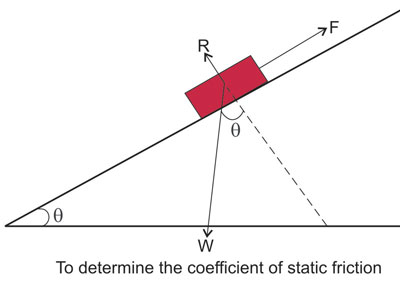|
The coefficient of friction, with the symbol
µ is the constant in the friction
equation, F = µR.
It is the ratio of the force of friction acting between two
surfaces in contact, and the force needed to slid one over the other.
Coefficient of friction, friction coefficient or frictional
coefficient, as it is also known, cannot be determined by calculations, but by
experiment. Its values depend on the materials in contact with each other, and
it ranges from near zero to above one.
If coefficient of friction is zero, it means there is no
friction existing between the surfaces. However, this is only a hypothetical
value, since no surfaces in contact has been found to be frictionless.
The higher the value of coefficient of friction, the
greater the frictional force acting between the surfaces, and this means a
higher force will be needed to slid one of them over the other.
In comparison, the coefficient of static friction for two
particular surfaces is usually found to be higher than their coefficient
of kinetic friction. This goes with the fact that static friction is higher
than kinetic
friction, however, there are certain surfaces whose coefficient of static
and kinetic friction are the same. Examples of these kinds of surfaces include
Teflon on Teflon surface.
Experiment To Determine The Coefficient Of Static Friction
The coefficient of static friction,
µ
between two surfaces in the form of a plane, see diagram below, is to
place a body on the plane, and gradually increase the angle of inclination θ
of the plane until the body is just about to slide down the plane.
The coefficient of static friction,
µ
can be shown to be µ
= tanθ

Proof: Let R be the normal reaction and F the static
or limiting frictional force acting when the body is about to slide down.
Resolving along the plane for equilibrium,
F = Wsinθ
--- equation (1)
Resolving perpendicular to the plane,
R = Wcosθ
---equation (2)
Dividing equation (1) by (2),
F/R =
µ = Wsinθ/Wcosθ
= tanθ
The coefficient of friction, µ, for some surfaces are given below:
Wood on wood ---
0.3 – 0.5
Wood on metal --- 0.6
Metal on metal --- 0.15 – 0.2
Metal on greased metal ---
0.1
Wood on stone ---
0.6 – 0.7
Read
about friction here
Read about static friction here
Read
about kinetic friction here
Read calculating friction here
|